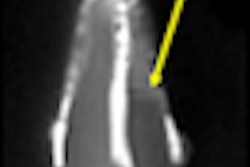LED Medical Diagnostics, the parent company of VELscope Vx Enhanced Oral Assessment system manufacturer LED Dental, is pursuing an initiative to apply its tissue fluorescence visualization technology to the detection of skin cancer and other dermatologic diseases.
Before founding LED Medical Diagnostics in 2003, CEO Peter Whitehead codeveloped a fluorescence visualization-related patent that later became a basis for the company's VELscope technology. Since 2006, three generations of that technology have been brought to market, resulting in sales of more than 7,000 devices that have been used to conduct over 10 million screenings for oral cancer and other oral disease, the company noted.
LED Medical believes that this technology holds similar potential in the dermatologic market.
"In the seven months since our December 2010 launch [of the VELscope Vx], our unit sales have exceeded the past two years combined," Whitehead stated in a press release. "While we have a great deal of growing yet to do in the oral health market, we feel the time is right to explore applying our technology and lessons learned to the field of dermatologic disease detection and excision."
From a physiological standpoint, oral soft tissue and skin tissue have many similarities, he added.
"We believe that tissue fluorescence visualization technology can improve the detection and surgical removal of dermatological disease just as it has with oral disease," he said.
In particular, he believes feels that LED's technology can enhance a surgeon's success rate when excising diseased tissue.
"Basal cell carcinoma has a tentacle-like construction that can reach well beneath the surface and beyond the view of the naked eye," Whitehead said. "As a result, skin cancer surgery often leaves cancerous tissue behind. We feel that our tissue fluorescence technology will make it easier for surgeons to see all diseased tissue and ensure that 100% of targeted tissue is removed during surgery."
The VELscope system was the first to receive Health Canada and U.S. FDA clearance to help surgeons determine the appropriate surgical margin for the excision of oral cancer and precancer, Whitehead noted.



















